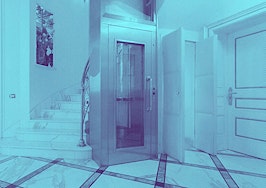The ability to discuss, in layman’s terms, basic types of insulation used in residential construction will help you gain your client’s confidence. You’ll be able to offer them some much-needed guidance through the process of selling or purchasing a home.
A variety of insulation types exist including wraps, which wrap an entire building, rolls of insulation or batting, used in attic insulation, and rigid foam boards, which I’ll delve into here.
The purpose of insulation is to maintain a constant, comfortable temperature in a structure by keeping heat inside. The U.S. Department of Energy reports that 50 to 70 percent of energy is used to heat and cool our buildings.
The use of appropriate insulation, when installed properly, can significantly reduce energy costs in residences. Insulation also reduces noise, keeps pests out, waterproofs structures and minimizes air filtration.
Foam insulation is defined by the R-value, a measure of how well the insulation resists the conductive flow of heat. The R-value is also used in measuring the energy efficiency of windows and completed walls.
Average temperatures in the U.S. mandate that R-values for insulation range between R5 and R10. Rigid foam insulation ranges from R1 for quarter-inch-thick insulation to R15 for three-inch-thick insulation. An insulation and energy adviser will direct homeowners in the appropriate insulation thickness for the local climate conditions.
Rigid foam panels are comprised of extruded polystyrene foam and produced in 4- by 8-feet panels, to fit between framing studs in typical residential construction.
This size, which is compatible with standard drywall and gypsum board, enables construction crews to efficiently install the insulation. Rigid foam insulation can be used in walls, ceilings and floors and is especially useful in basements.
The advantage of rigid foam insulation in finishing basements is that it keeps water vapor in a gaseous state and won’t condense on the walls. The foam board must be covered with a fire barrier of half-inch gypsum wallboard to achieve complete effectiveness.
Pricing for rigid foam ranges from $0.75 to $0.90 for an R-value of R13 to $1.20 to $1.45 for an R-value of R21. Installation costs do not vary, remaining at $0.95 to $1.30 per square foot, despite the R-value.
When shopping for new homes or homes with recent additions, it’s important to understand how well the building is constructed and insulated.
In completed homes, insulation typically reveals itself in attics and basements. In new construction, if the buyer is seeing the building while still in construction, insulation will be evident and can be discussed with the buyer.
A real estate agent’s basic understanding of insulation types, pricing and construction will help to enlighten buyers as to the value of their new home. Energy efficiency, which is the goal of insulation, will always be an important topic, especially as climate changes continue. An informed real estate agent will help sellers and buyers in the decision-making process.
Gerard Splendore is a licensed associate real estate broker with Warburg Realty in New York. Connect with him on LinkedIn.













